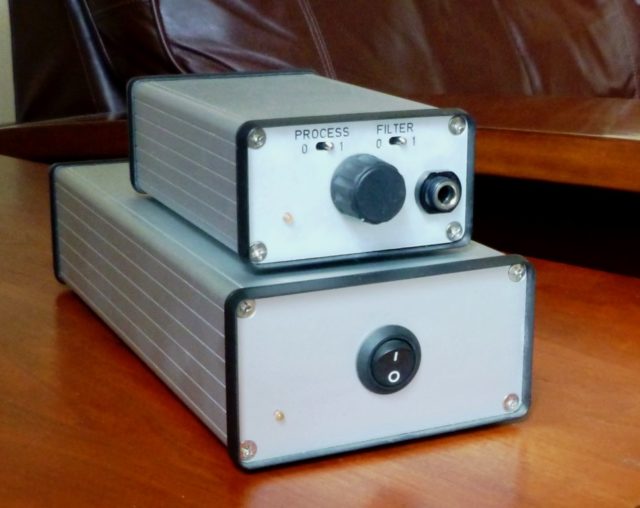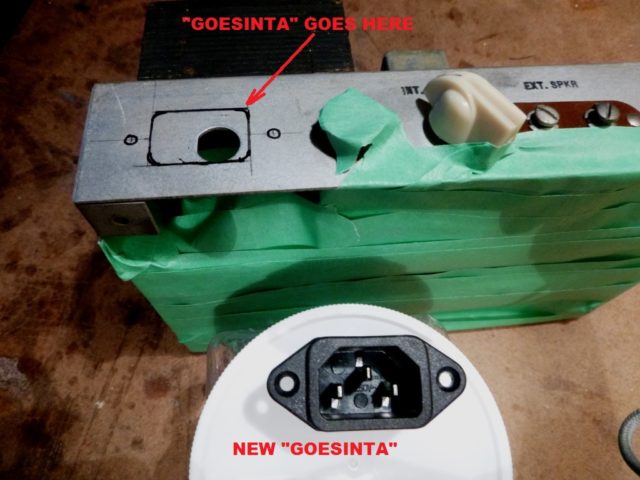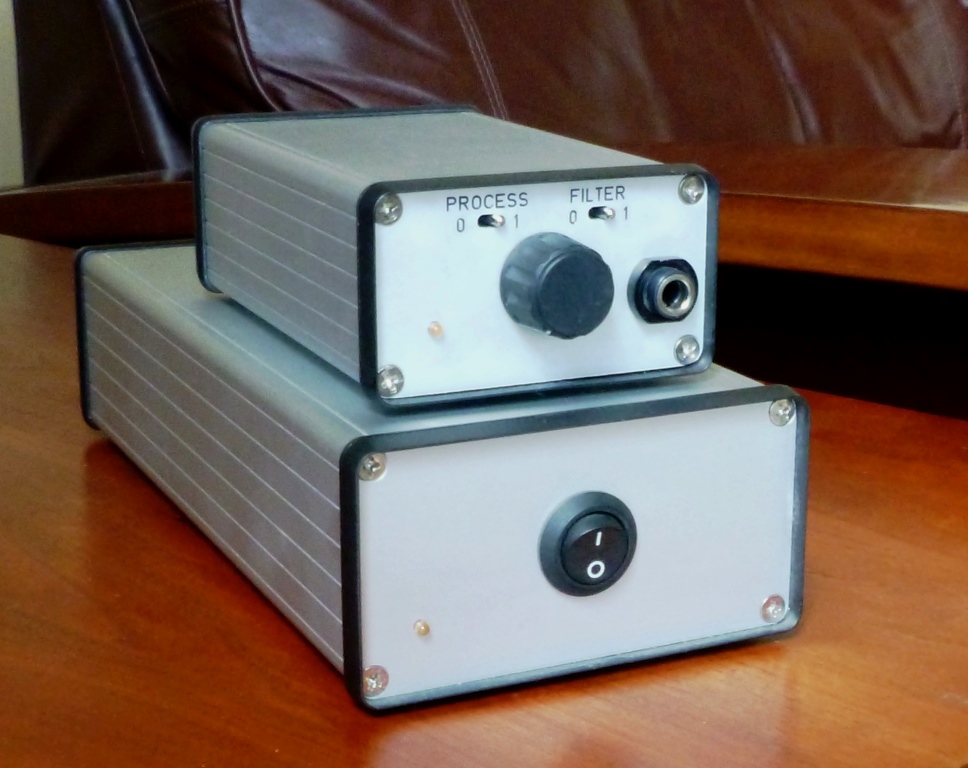My Audio Life (Part 8)
By Steve Graham
Tube Amp Rescue (extended mix)
A warning to those with short attention spans: This installment of My Audio Life is a bit, correction, make that very long-winded. There are some nice pictures though, and a true story about a certain audio scribe that almost didn’t survive a social encounter. Oh, and I talk about tube amps a bit too.
Does everyone remember the Thunderbirds of International Rescue fame? These are to adult eyes cheesy but mostly harmless kids TV programs from the 1960’s. They featured puppets doing dramatic things in futuristic cars, spaceships and underwater craft. The sets were really cheap looking, but the spacecraft were always shooting jets of what was actually the smoke of gun powder or other combustible substances, for a “realistic” effect. They were filmed in “Supermarionation” by the British team of Gerry and Sylvia Anderson.
The “so bad it’s good” character of the puppet adventures developed a huge following that continues to this day. Recent episodes reportedly contain “real” animation. Though I haven’t seen them, I suspect I wouldn’t be a fan. The Thomas the Tank Engine series, especially the ones narrated by Ringo Starr, with real model trains and “frozen” people are much more charming than the new computer generated ones.
I heard an interview with Gerry Anderson a few years ago, and he said how years later he was embarrassed by the Thunderbirds programs. That was until seeing the young son from his second family enjoy them. Anderson was also involved in the production of the video for the Dire Straits song, “Calling Elvis”, where Thunderbirds-style puppets appeared.
You have to admire the Brits; even when they do “cheesy”, they do it wholeheartedly. In our field of interest, some of the Quad solid state designs with ghastly opamp chips come to mind.
Don’t get me wrong, I don’t dislike the Brits; I am in fact an Anglophile in my reading, movie and music preferences. Some of my favourite NOS tubes are Mullards, and I own a couple of pieces of British HiFi gear.
I came close to having an English woman beat the crap out of me once, when I made a mildly disparaging remark about the royal family. I only said I wanted the Queen to live forever because I didn’t want to see “Big Ears” on the Canadian twenty dollar bill. I was under the influence of the fermented grape at the time, and thus emboldened, made an even more disparaging remark about the Duchess of Cornwall, that my wife forbids me to repeat. I think it was only the oft-maligned ‘British reserve’ that saved me from having my face and internal organs rearranged. She did however give me some filthy looks that would have felled lesser men.
Toolmakers to the Rescue
I’ve been writing about some of my DIY efforts and showing you a few pictures as well. I’m sure many of you are muttering, “Yeah, if I had access to metal and woodworking tools like you’ve had, I could do some great things too.” I won’t make you envious by showing you more pictures of some of my projects. Oh, what the heck, maybe one or two.

You want help with some metalworking? I’ll let you in on a secret; get to know your neighbourhood tool and die maker. Look for a small shop that doesn’t specialize. You want one that does all sorts of work, not just say automotive dies. If you pick the wrong one or one that is too busy, ask if they know of another shop. The tool and die community is well connected and if one can’t help out they can likely send you to another one that can.
When I say talk to a tool and die maker, I mean it in the now old-fashioned sense; talk to them face to face. Emails and texts just don’t cut it. Toolmaking is very much a craft and as such toolmakers are very traditional. A personal connection can mean a lot more and get you a better price if you can actually hand the guy a sketch of the part you want made. If modifying an existing part, a quick sketch is helpful though not always necessary. If asked, tell them what you are making and where the parts fit into the big picture. Many shops just make parts and never see the end product, so for them it’s sometimes nice to know the end use.
I can think of at least three tool and die shops within 8 km of where I live, in a population base of about 25,000 – and there are probably six or eight more within 15 km. If they’re not too busy, and you aren’t in a hurry, a “deal” can usually be had. If they don’t normally deal directly with “retail” customers, suggest a cash donation to the shop coffee fund or golf tournament prize fund.
I know and have worked with tool and die makers and they are all talented, practical people, confident in their abilities. The tool makers I’ve worked with (I’ve had dealings with them as an engineer) have to a man been generous with their knowledge and time. Most of them have a wide variety of interests in bikes, cars, snowmobiles, and all sorts of “guy stuff”. Some are talented amateur musicians, some are into hunting and fishing. They will likely be interested in what you are doing, even though it’s nerdy audio stuff. They might even ask you for help sourcing tubes for an old guitar amp. Offer to help, and I don’t mean just give them a web addresses; get your hands dirty, change out some tubes and maybe even replace a power supply cap. One of our site sponsors, “Thetubestore” are guitar oriented folks and they can probably help with advice and parts if needed.
Safety Notice: Tube amps have LETHAL voltages and may contain them even after they have been switched off and unplugged. Don’t go poking about in one if you don’t know what you are doing. I’m not trying to discourage anyone but if you’re not sure, do some research. If possible track down an old (or even a young) tube guy for a few pointers.
If you find a shop that will help out, be a good head, stop to say a quick hello occasionally and drop off a coffee shop gift card. Twenty bucks can get you a lot of good will. Online shopping may be convenient, and the wave of the future, but old-school personal connections are valuable when making something unique.
To dress your project up a bit, take the parts to the local trophy engraver before assembly. If your cabinet of choice is a colour other than silver or white they’ll etch through the anodizing (I’m assuming your case is aluminum) to provide the lettering for controls and jacks. Some tool shops even do lettering on their computer controlled milling machines, though the local trophy engraver might be less expensive.
Will this cost some money? Of course it will. But if you’re plunking down big bucks for things like bespoke capacitors, fancy resistors and expensive tubes you should budget a little to make your project look good too.

Even if you are not building from scratch, a toolmaker might be able to help with the repair or rejuvenation of an older piece of equipment. Cutting large holes in sheet metal is difficult and a bit dangerous. If for instance, you’re restoring an old amp or some other piece of vintage gear and want to make it safer by installing a three prong power inlet, a toolmaker can help. You won’t need a drawing, just take him the chassis marked where you want the new piece to go, give him the “goesinta” (a toolmaker term denoting a part that “goes inta” another part), and ask him to please make it look nice. There is usually some prep required to prevent metal chips from getting caught up in things, see picture below.

The picture above shows the placement of the new goesinta. The painters tape is part of the prep to prevent metal chips from entering the rest of the chassis. Though not visible, tape also covers the tops of the tube sockets. The photo is actually a mock up – I wouldn’t use painters tape for a real prep to cover open areas as it doesn’t stick to itself well. A better choice might be vinyl electrical tape or cloth based duct tape.
If you’re worried about the finish being damaged on an audio classic, mask off the chassis and anything on it as well. Painters tape might work well for this. When covering the actual wiring, use electrical or duct tape as described in the previous paragraph. Test an unobtrusive area first, to ensure that the adhesive on the tape does not damage the finish. (Also for how much messy residue it leaves. -Ed)
After the machining is complete, carefully remove the tape. Gently blow off the chassis to remove any rogue chips. Inspect the wiring diligently to ensure no chips remain.
In case you don’t already know; almost every item you touch or that touches your life has been made, assembled, moulded, stamped out, harvested or processed in some way with tools made by a tool and die maker.
If some of you are interested in more details, give us some feedback, and I’ll write up a small “drawing 101” course and do up a few samples. We might even do a small project together if enough of you are interested.

